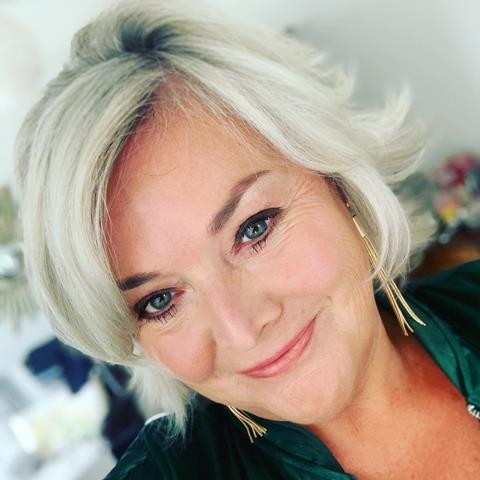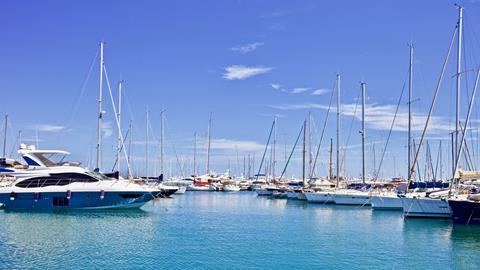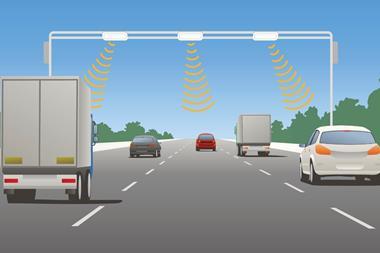With staycations becoming the norm and social distancing still at play with the ongoing coronavirus pandemic, boat sales and insurance have seen an upsurge in the UK and US. Insurance Times looks at a new partnership that is bringing telematics data to boat insurance, and how it could save underwriters money, improve claims handling as well as being a key opportunity for brokers
The UK’s continuing lockdown has seen boat sales soar as more and more people decide to take staycations and as a result boat insurance has also risen – the same trend has also been seen in the US.
Telematics entrepreneur Penny Searles, who founded the very first telematics broker, Wuneli, took on a new role as interim chief executive in March at a Connecticut-based vessel monitoring company called Boat Fix – and now she hopes to apply her knowledge of motor telematics to boats in this partnership.
She told Insurance Times: “It’s exactly the same premise as telematics for motor vehicles – but for boats.”
Originally founded thirty years ago, the idea for Boat Fix came about when its founder was unable to start his boat on a Sunday but all the repair shops were shut, he created a solution to tell owners in advance if there was an issue with their vessel.
The device includes a GPS tracker which is installed by Boat Fix and data is stored in the cloud. An alert can be sent if someone for example tries to steal the vessel or outboard engine, both are very common claims – as the device is linked to a free app on the customers smartphone. It can also provide automated reports daily, weekly or monthly.
But with boat sales rising, claims have also increased with H1 2020 seeing a 20% uptick and collisions being the leading cause – according to Travelers.
“It’s helping the insurers in the US and a couple of big Lloyd’s brokers monitor their fleet, understand what they are insuring, whether they [boats] are kept in marinas, how often they are being used and its reducing the loss ratios as if you damage your vessel, you get an alert and can go and deal with it, so we have saved insurers quite a bit of money in the US,” Searles continued.
And now Searles is looking to do the same in the UK and Europe.
But this upsurge in boat insurance could be a key opportunity for brokers.

Saving underwriters money
“It’s quite interesting for me to adapt an existing process to another vessel. I have seen the benefits of telematics data in the motor world and we have sort of peaked a bit on motor – its not moving forward as fast as we would have liked on connected cars, so I am really pleased that some of the marine insurers are interested in trying to understand how to use the data more effectively,” she said.
When asked how its automated reports and breadth of data can aid underwriters, Alastair Crawford, founder and chief executive of Boat Fix said: ”We know that we can save the underwriter a substantial amount of money.
”We can improve claims handling, [as] there is no hearsay, it’s digital truth in real-time. With all the fraudulent claims about, we can root most of those out.
”As an underwriter you can see your whole asset base. We are huge believer in the insurance market, we see that as our biggest sales channel.
”The vast majority of the time [owners] are not on their boats and that’s where the problem starts. So the value to the boat owner or the insurance company to the underwriter is when that boat is unattended, which is most of the time. [And] at renewal we can get a better pricing matrix.”
Boat Fix hopes to partner with UK-based Sea Start, a monitoring and concierge service which was founded by Crawford but later sold.
Speaking about why she targeted the boat insurance market in particular, Searles said: “I think it’s got some real similarities with motor, there are a lot of boat owners in the US and Europe and I can see the advantage of the data. When I started speaking to marine insurers, they had never come across telematics data.
“I think there is a misnomer in the marine insurance market – ‘we are not interested in how the vehicles are being sailed so telematics is not useful’. In motor, behaviour data is very critical as you can see how someone drives, but in marine they have never had any data so they do not understand the value. My role is to help them understand how it could be beneficial.”
Giving the example of a marine insurer in the US insuring 10,000 vessels and predictions of a hurricane, telematics data could allow the insurer to see how many vessels are at sea and give advanced warnings.
Out of sight
For boat damage, telematics can also be of service, Searles said: “People never have their vessels on their driveways, they will be in marina or out at sea – they cannot see what is happening. The number of a vessels that spring a leak, by the time [the boat owner] has found out, the boat has sunk, or [it has] so much damage there would be a massive claim.”
Telematics, Searles said this would allow insurers to be more accurate in premium pricing as they have a ‘boat guardian’. But it also presents brokers with an evolving market.
When asked why telematics has not been applied to this market previously, she added: “The insurance industry takes a long time to pivot and change, if you consider the average vessel is around £20,00 to £30,000 in value. With marine telematics we are where we were with motor telematics in 2008.”
Boat Fix case studies
Case study one: GPS tracking playback of fatality
Date: 30 November 2019
Vessel: Bavaria 49 sailing vessel
Location: Cartagena, Columbia
History: Charter Vessel ran over a swimmer off the coast in a fatal accident.
Outcome: Maritime Investigation Agency requested tracking information from Boat Fix detailing speed, heading and exact location for 60 minutes before and after the time of the incident. The playback tracking proved that the vessel was not operating in a designated swimming area or being operated recklessly. The data provided absolved the charter company and the skipper from liability
Potential Saving: Estimated liability insurance of up to $1,000,000
Case Study Two: Geo-fencing
Date: 15 August 2019
Vessel: 27’ sailing vessel
Location: Thimble Islands, Connecticut
History: Vessel left unattended overnight at anchor. Geo fencing set on the app with a 100 yard radius. Anchor dragged overnight in an onshore wind towards rocky coastline.
Outcome: Geo Fence alarm triggered. Harbour master alerted, vessel towed to safety.
Potential Saving: Possible total loss. Estimated hull value $40,000
***
Figure breakdown
- Most common claim: Outboard motor theft
- Most frequent alert: Bilge pump breaking
- 70% of boats sink while at the dock unattended
Read more…ThingCo aims to expand globally after tapping telematics veteran Martin Williams as new COO
Not subscribed? Become a subscriber and access our premium content














































No comments yet